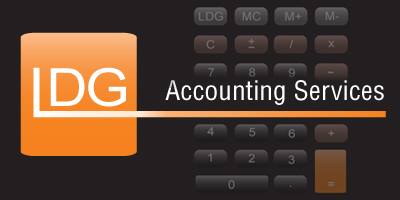Business Accounting FAQ

Helpful Accounting Tips
Questions About Bookkeeping
& Our Business Accounting Services?
& Our Business Accounting Services?
-
Do I really need a bookkeeper?
Yes! You are great at what you do, but didn't go into business to be an accountant. Don’t spend your valuable time doing this. Having a professional on your team can save you time, money, and stress in the long run.
-
How much is accounting and bookkeeping going to cost?
We have different price schedules to make it affordable for every business. You can view many of our accounting packages and options on our website. While the main focus when choosing an accountant should not be cost anyone in business understands it is a very important part. We make sure everyone is well aware of our abilities and the costs they will be incurring BEFORE we start the relationship. Our goal is to make sure you have the best service that fits you and your business. With that being said, there are different levels of service that we can provide and the costs will depend on what you need. Please see our Services List for a description of each package that we offer.
-
How long will it take?
It depends on how long you have been in business and how many transactions you have. Every business is different, but we can give you an estimate after an initial review of your finances.
-
Do you do taxes?
We assist clients in finding great tax preparers.
-
What do these numbers mean?
Every number on your financials has a different meaning. We love to teach business owners exactly what they mean. We are always sure to answer all of your questions whenever they arise.
-
What is Gross Profit Margin?
Gross profit margin measures the amount of money left over from product sales after subtracting cost of goods sold (COGS). A higher gross profit margin indicates the company is efficiently converting its product or service into profits. The cost of goods sold is the total amount to produce a product or service, including materials and labor. Net sales are revenue minus returns, discounts and sales allowances.
-
What is Operating Cost Margin?
Operating profit margin shows the percentage of profit a company makes from operations before subtracting taxes and interest. Increasing operating margins can indicate better management and cost controls within a company. Gross profit minus operating expenses is also known as earnings before interest and taxes
(EBIT).
-
What is Operating Cash Flow?
Operating cash flow (OCF) is the amount of cash a company generates through typical operations. This metric can give a business a sense of how much cash it can spend in the immediate future and whether it should reduce spending. OCF can also reveal issues like customers taking too long to pay their bills or not paying them at all.
-
What is Return On Assets?
Return on assets measures the profitability of a business compared to its total assets. This return on investment (ROI) metric shows how effectively a company is using its assets to generate earnings. A higher ROA means a business is operating more efficiently. To calculate average total assets, add up all assets at the end of the current year plus all the assets from the prior year and divide that by two.
-
What is Budget vs. Actual?
Just as it sounds, budget vs. actual compares a company’s actual spend or sales in a certain area against the budgeted amounts. Although budgets and expenses are related, budget vs. actual can be used to compare both revenue and expenses. This “budget variance analysis” helps small business leaders identify areas of the business where they’re overspending that may need further attention. It also reveals areas of the business that
outperformed expectations.
-
What is the difference between a Contractor vs an Employee?
Employee – The employer collects and remits taxes for the employee and pays a portion of their Social Security and Medicare taxes. An employer pays overtime. The employer sometimes offers other benefits such as medical insurance and there are others such as workers compensation insurance which is a whole other discussion. An employee receives a W2 at the end of the year.
An Independent contractor is responsible for their own taxes and insurance and doesn’t get paid overtime. An independent contractor receives a 1099 at the end of the year if they receive more than $600.00.
So how do you tell? There are three areas to look at:
- Financial Control
- Behavioral Control
- Relationship of Parties
A few factors to consider. This is not an exhaustive list.
- Is this the work the business provides or is this a support service to the business
- How much instruction is given on how to accomplish the tasks and is training necessary
- Is this an ongoing relationship
- Who sets the hours of work
- Is a full time commitment needed
- Where is the work done
- Manner of Payments – invoicing vs time log
- Who provides the tools and materials
-
What 3 fundamental statements should you use to analyze your business?
1. income statement
2. balance sheet
3. statement of cash flow
-
Why do I need financial statements?
1. to prepare taxes
2. open a line of credit
3. to apply for a mortgage or refinance
4. to see how the company is performing
-
Why should I choose a local accounting firm vs an online firm?
A local firm will give you a more personalized experience and is likely to know more information about the types of business the client is and the vendors they interact with.
-
Will I get help if I am ever audited?
Yes.
-
7 Money Habits successful business owners should follow.
1. Regularly review finances
2. Maintain a budget
3. Save for taxes
4. Proactively reduce debt
5. Structure business to optimize liabilities and taxes
6. Pay themselves first
7. Maximize tax write-offs and deductions
